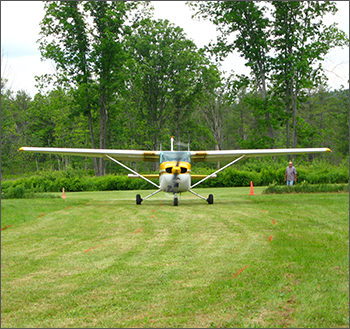Subscriber question:
“How important is it to follow the traffic pattern when departing a non-towered airport?” — Cassy T.
Elaine:
 “Collision avoidance at a non-towered airport depends on pilots knowing what to expect from the other pilots. This is best done with standard procedures found in the FAA Airplane Flying Handbook, which says:
“Collision avoidance at a non-towered airport depends on pilots knowing what to expect from the other pilots. This is best done with standard procedures found in the FAA Airplane Flying Handbook, which says:
On the departure leg after takeoff, the pilot should continue climbing straight ahead and, if remaining in the traffic pattern, commence a turn to the crosswind leg beyond the departure end of the runway within 300 feet of the traffic pattern altitude. If departing the traffic pattern, the pilot should continue straight out or exit with a 45-degree turn (to the left when in a left-hand traffic pattern; to the right when in a right-hand traffic pattern) beyond the departure end of the runway after reaching the traffic pattern altitude.
Pretty straightforward, but there’s more to it than that.
First, make sure you’re flying at the correct pattern altitude. It’s not always 1000 feet AGL. If it isn’t, the altitude will appear in the airport’s Chart Supplement entry.
Second, use common sense. If terrain, obstacles, traffic, or other issues don’t allow for a textbook departure path, do what’s necessary for safety, whether it’s climbing on the runway centerline until it’s safe to turn or something else.
Third, don’t get into the bad habit of turning opposite a left- or right-hand traffic pattern, even if you think no one else is there. It’s not worth risking a traffic conflict. If it’s a left-hand pattern and you want to head the other way, it takes just a few seconds to a minute, depending on the aircraft, to climb until at least 500 feet above pattern altitude while getting some distance between you and the crosswind leg.
Regardless of how you choose to depart the pattern, keep watching and listening for traffic, which, hopefully, you’re doing all the time.”
When departing a non-towered airport, when is it OK to turn off the departure leg, opposite the traffic pattern direction? Assume you don't hear or see any traffic in that direction.
